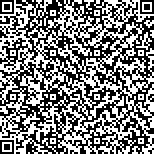下载中心
优秀审稿专家
优秀论文
相关链接
摘要

高分辨率地表冻融监测对研究根河地区碳氮循环、水土流失和土壤冻融侵蚀非常重要。本文采用Kou等(2017)提出的被动微波亮温降尺度方法和1 km空间分辨率的温度数据,将0.25°空间分辨率的被动微波亮温降尺度至0.01°空间分辨率。利用通过模型模拟与实验数据发展得到的冻融判别式算法DFA_Zhao(Discriminant Function Algorithm)和改进的冻融判别式算法DFA_Kou(Improved Discriminant Function Algorithm),基于降尺度前后的被动微波亮温监测根河地区的地表冻融。以根河地区2013年7月—2015年12月的地下0—5 cm深度的实测土壤温度检验这两种冻融判识算法的分类精度。结果显示,降尺度前后两种冻融判识算法整体判对率差异在6.72%内;DFA_Zhao算法融化判对率的均值比DFA_Kou算法高10%,DFA_Kou算法冻结判对率均值比DFA_Zhao算法高1%。两种冻融判别式算法的冻结判对率均在90%以上,升轨期的融化判对率均在80%以上,但两算法降轨期的融化判对率较低,在40%—82%之间。同时,还进一步讨论并分析了两种冻融判别式算法和被动微波亮温降尺度方法可能存在的问题,指出了可能的改进方向。
As the northernmost and coldest area in Inner Mongolia with the largest wetland in China, high-resolution and full time-space-covered surface freeze/thaw (F/T) in Genhe area must be determined. Carbon-nitrogen cycle, water and soil losses, and soil freeze-thaw erosion must be investigated in the Genhe region. In this study, a downscaling method of passive microwave (PMW) brightness temperature (TB) proposed by Kou et al. is used to downscale the TB from 0.25° spatial resolution to 0.01° spatial resolution. The downscaled temperature data of 1 km spatial resolution produced by Zhang et al. are used. AMSR2 TB is adjusted to AMSR-E TB using a linear conversion model between different polarizations of AMSR2 and AMSR-E sensors. Then, PMW TB and downscaled TB data are adopted to discriminate the surface F/T status using the F/T discriminant function algorithms developed by Zhao et al. and Kou through model simulation and experimental data, correspondingly.
A comparison between the F/T state and the soil temperature measured at 0-5 cm in Genhe area shows that the overall classification accuracy of the two F/T discriminant algorithms before and after downscaling is within 6.72%, and the accuracy difference is insignificant. The mean value of thawing classification accuracy is 10% higher in the F/T discriminant algorithm developed by Zhao et al. than in Kou's algorithm (DFA_Kou). Kou's freezing classification accuracy is faster than that of Zhao et al. (DFA_Zhao, approximately 1%). The freezing classification accuracies of the two F/T discriminant algorithms are higher than 90%, and the thawing classification accuracies during the ascending orbits are higher than 80%. The thawing classification accuracies of two algorithms during the derailment period range from 40%-82%.
During the development of DFA_Zhao and DFA_Kou, the temperature data at 0-1 and 0 cm are introduced to correct the freeze-thawing discriminant obtained through simulation, thereby making the two algorithms sensitive to the freezing and thawing changes in surface soil. PMW has a certain depth of penetration, which may cause errors when using the two algorithms to monitor soil freeze-thaw conditions. The proposed downscaling method is based on the assumption that the land cover is basically the same during downscaling TB between the PMW large pixel (0.25°) before downscaling and small pixel after downscaling (0.01°). This method was proposed by Kou et al. (2017) in Naqu area on the plateau. The land cover of Naqu area is nearly entirely grassland. However, the land cover in Genhe area mainly consists of three types, namely, forest land, grassland, and agricultural land. The proposed method has limitations in mixed pixels of different surface types.
Thus, under the premise of without introducing the experimental calibration data, the penetration depth of TB during freeze-thaw transformation and the body scattering effect of TB in the soil layer will be investigated in the next step. A high-resolution surface freeze-thaw monitoring algorithm suitable for complex surface types and full time-space coverage will be developed in the next step.

